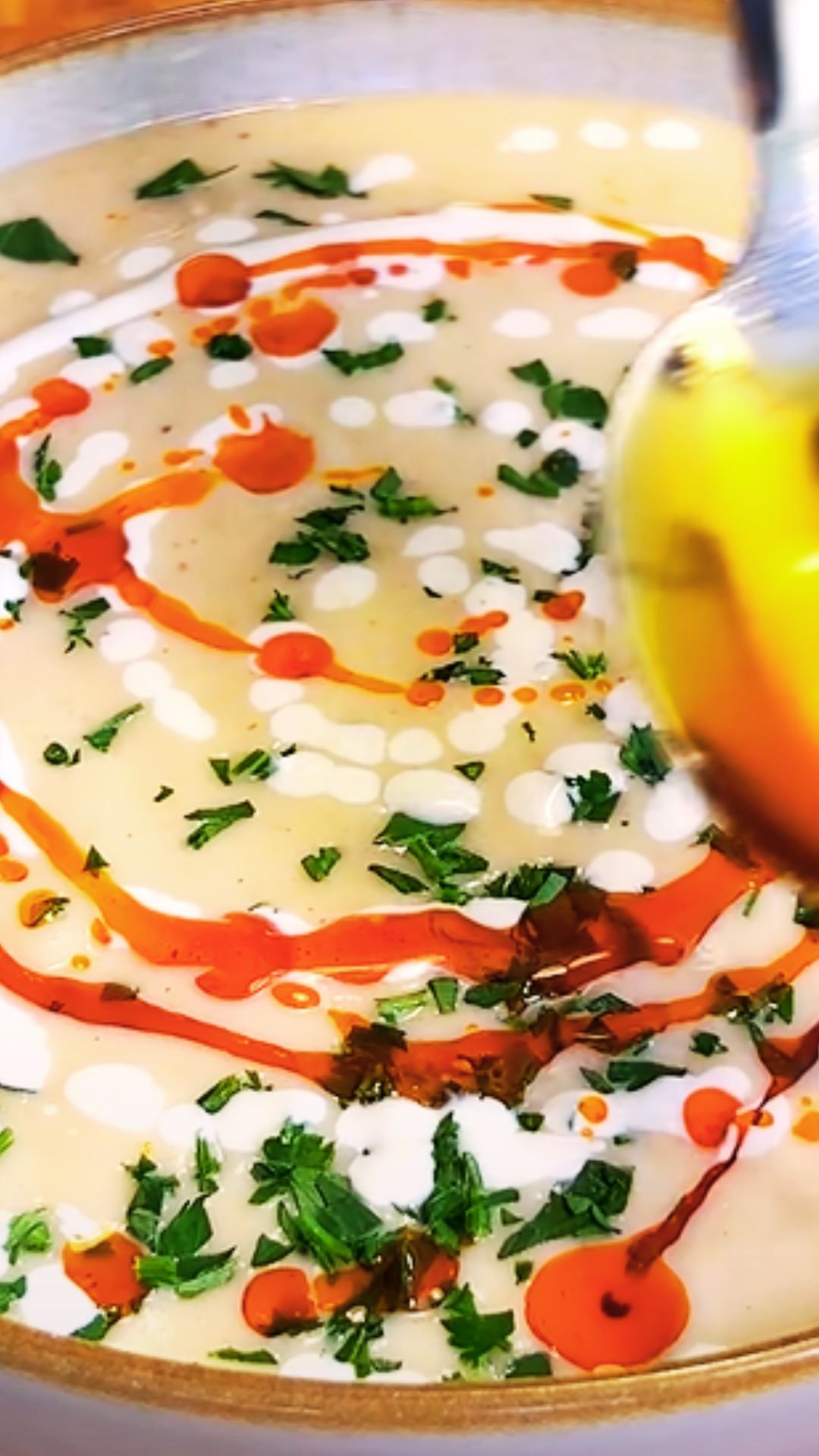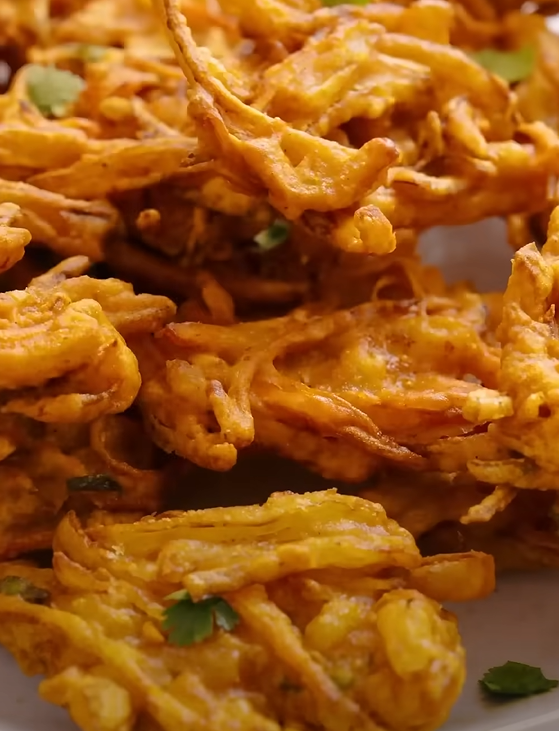When I first started my journey into vegetarian cooking fifteen years ago, I never imagined I’d discover a world of comfort food that could rival any traditional meat-based dish. Today, I’m thrilled to share with you over 100 vegetarian comfort food recipes that have become staples in my kitchen and countless others around the world.
Comfort food isn’t just about taste—it’s about nostalgia, warmth, and that feeling of being truly satisfied after a meal. I’ve spent years perfecting these recipes, testing them with friends and family, and I can confidently say that each one delivers that essential comfort food experience while being completely plant-based.
What Makes Comfort Food Truly Comforting?
Before diving into my collection, let me explain what I’ve learned about the elements that make comfort food special:
Texture Variety: The best comfort foods combine different textures—creamy, crunchy, chewy, and smooth all in one dish.
Rich Flavors: Comfort foods tend to be rich in umami, the fifth taste that makes food deeply satisfying.
Temperature: Most comfort foods are served warm, creating that cozy feeling we all crave.
Familiarity: These dishes often remind us of home, childhood, or special occasions.
Satiation: True comfort food leaves you feeling genuinely full and content.
Essential Ingredients for Vegetarian Comfort Cooking
Throughout my years of cooking, I’ve discovered certain ingredients that consistently deliver comfort food satisfaction:
| Ingredient Category | Key Items | Comfort Factor |
|---|---|---|
| Grains & Starches | Brown rice, quinoa, sweet potatoes, regular potatoes, pasta | Provides filling base and satisfying carbohydrates |
| Proteins | Lentils, chickpeas, black beans, tofu, tempeh, nuts | Creates satiety and rich textures |
| Umami Boosters | Nutritional yeast, soy sauce, mushrooms, tomato paste | Adds depth and savory satisfaction |
| Creamy Elements | Coconut milk, cashew cream, tahini, avocado | Provides richness and mouthfeel |
| Aromatics | Garlic, onions, ginger, herbs, spices | Creates appetizing aromas and complex flavors |
Breakfast Comfort Foods (15 Recipes)
Starting my day with comforting breakfast food sets the tone for everything that follows. Here are my favorite morning comfort foods:
Hearty Breakfast Bowls
- Creamy Coconut Rice Porridge – A warming bowl with coconut milk, cinnamon, and fresh fruit
- Savory Chickpea Flour Pancakes – Protein-rich pancakes with herbs and vegetables
- Sweet Potato Hash with Peppers – Crispy cubes with colorful bell peppers and onions
- Quinoa Breakfast Bowl – Nutty quinoa with berries, nuts, and maple syrup
- Mushroom and Spinach Scrambled Tofu – A protein-packed alternative to scrambled eggs
Warming Breakfast Beverages
- Golden Turmeric Latte – Anti-inflammatory spices in creamy plant milk
- Homemade Chai with Oat Milk – Warming spices for cold mornings
- Green Smoothie Bowl – Thick smoothie topped with granola and fresh fruit
Weekend Breakfast Treats
- Fluffy Vegan Pancakes – Light and airy with vanilla and cinnamon
- Banana Walnut French Toast – Using thick bread soaked in plant milk mixture
- Breakfast Quinoa Muffins – Portable comfort food with dried fruit
- Chia Seed Pudding Parfait – Layered with fruit and nuts
- Overnight Oats Three Ways – Chocolate, berry, and tropical variations
- Avocado Toast Deluxe – Multiple toppings and flavor combinations
- Homemade Granola Clusters – Crunchy, sweet clusters for any topping
Soups & Stews (25 Recipes)
Nothing says comfort like a steaming bowl of soup. I’ve perfected these recipes over countless cold days and sick nights:
Classic Comfort Soups
- Creamy Tomato Basil Soup – Rich and velvety with fresh herbs
- Hearty Vegetable Minestrone – Packed with seasonal vegetables and beans
- Roasted Butternut Squash Soup – Naturally sweet and incredibly smooth
- Lentil and Vegetable Soup – Protein-rich with warming spices
- Mushroom Barley Soup – Earthy and filling with pearl barley
- Split Pea and Vegetable Soup – Traditional comfort without the ham
- Creamy Broccoli Soup – Nutritious and satisfying
- Carrot Ginger Soup – Bright and warming with a hint of spice
International Soup Inspirations
- Thai-Inspired Coconut Soup – Creamy with lemongrass and vegetables
- Mexican Black Bean Soup – Spicy and satisfying with lime
- Italian White Bean Soup – Rustic and hearty with herbs
- Indian Spiced Lentil Dal – Warming spices and creamy texture
- Japanese Miso Soup with Tofu – Light but satisfying umami flavors
Hearty Stews
- Moroccan-Inspired Vegetable Tagine – Exotic spices with dried fruit
- Irish-Style Vegetable Stew – Root vegetables in rich broth
- Three-Bean Chili – Spicy and protein-packed
- Mushroom and White Bean Stew – Earthy and satisfying
- Ratatouille Stew – French-inspired vegetable medley
- Ethiopian-Inspired Lentil Stew – Complex spices and rich flavors
- Mediterranean Chickpea Stew – With olives and sun-dried tomatoes
- Hungarian-Style Goulash – Paprika-rich with vegetables
- Coconut Curry Stew – Creamy and aromatic
- Hearty Root Vegetable Stew – Perfect for cold weather
- Tuscan White Bean Stew – Simple and rustic
- Spiced Sweet Potato Stew – North African-inspired flavors
Main Dishes (35 Recipes)
These are the dishes I turn to when I need something truly satisfying for lunch or dinner:
Pasta Comfort
- Creamy Mushroom Stroganoff – Rich sauce over egg noodles
- Classic Mac and Cheese – Plant-based version of the ultimate comfort food
- Spaghetti with Lentil Bolognese – Hearty meat-free sauce
- Baked Ziti with Cashew Ricotta – Layered comfort in every bite
- Fettuccine Alfredo – Creamy sauce without dairy
- Pasta Primavera – Fresh vegetables in light cream sauce
- Lasagna with Spinach and Mushrooms – Layered perfection
Rice and Grain Dishes
- Mushroom Risotto – Creamy Arborio rice with earthy mushrooms
- Stuffed Bell Peppers – Rice and vegetable filling
- Fried Rice with Vegetables – Comfort food with Asian flair
- Quinoa Stuffed Squash – Nutritious and visually stunning
- Pilaf with Dried Fruit – Aromatic rice dish with nuts
- Barley Pilaf – Nutty grains with vegetables
Hearty Mains
- Vegetable Pot Pie – Flaky crust with creamy vegetable filling
- Shepherd’s Pie with Lentils – Classic comfort reimagined
- Stuffed Portobello Mushrooms – Meaty texture with savory filling
- Eggplant Parmesan – Crispy layers with rich tomato sauce
- Stuffed Cabbage Rolls – Traditional comfort with vegetable filling
- Vegetable Wellington – Elegant pastry-wrapped vegetables
- Quinoa-Stuffed Tomatoes – Fresh and satisfying
- Black Bean Burgers – Hearty patties with bold flavors
- Mushroom and Walnut Loaf – Vegetarian “meatloaf” alternative
- Ratatouille Tart – Rustic vegetable tart
- Spinach and Ricotta Cannelloni – Rolled pasta tubes in sauce
- Vegetable Curry – Coconut-based curry with vegetables
- Stuffed Sweet Potatoes – Baked potatoes with savory toppings
- Chickpea Tikka Masala – Rich and creamy Indian-inspired dish
- Mushroom Stroganoff – Creamy sauce over pasta or rice
- Vegetable Paella – Spanish-inspired rice dish
- Stuffed Eggplant – Mediterranean-style preparation
- Bean and Vegetable Enchiladas – Mexican comfort food
- Quinoa and Black Bean Casserole – One-pot comfort meal
- Mushroom and Barley Risotto – Hearty grain dish
- Vegetable Biryani – Aromatic Indian rice dish
- Mediterranean Stuffed Zucchini – Light but satisfying
Side Dishes & Appetizers (15 Recipes)

These complement any main dish and add variety to comfort meals:
- Garlic Mashed Potatoes – Creamy and indulgent
- Roasted Root Vegetables – Caramelized and flavorful
- Creamy Coleslaw – Fresh and crunchy
- Honey-Glazed Carrots – Sweet and tender
- Stuffed Mushrooms – Savory appetizer bites
- Spinach and Artichoke Dip – Creamy party favorite
- Roasted Brussels Sprouts – Crispy edges, tender centers
- Sweet Corn Fritters – Golden and crispy
- Baked Sweet Potato Fries – Healthier comfort food option
- Cauliflower Gratin – Creamy and cheesy alternative
- Herb-Roasted Potatoes – Crispy outside, fluffy inside
- Sautéed Green Beans – Simple and fresh
- Cornbread Muffins – Slightly sweet and crumbly
- Garlic Bread – Classic comfort side
- Pickled Vegetables – Tangy and refreshing
Desserts (10 Recipes)
No comfort food collection is complete without sweet endings:
- Chocolate Chip Cookies – Classic and chewy
- Apple Crisp – Warm fruit with oat topping
- Banana Bread – Moist and flavorful
- Chocolate Avocado Mousse – Rich and creamy
- Carrot Cake – Spiced and satisfying
- Pumpkin Pie – Smooth and spiced
- Berry Cobbler – Rustic fruit dessert
- Rice Pudding – Creamy and comforting
- Chocolate Brownies – Fudgy and indulgent
- Lemon Bars – Tangy and sweet
Seasonal Comfort Food Planning
I’ve organized my cooking around seasons, which helps me connect with natural rhythms and use the freshest ingredients:
| Season | Primary Ingredients | Recommended Dishes | Comfort Factor |
|---|---|---|---|
| Spring | Fresh peas, asparagus, leafy greens, herbs | Light soups, fresh pasta dishes, vegetable risottos | Fresh and rejuvenating |
| Summer | Tomatoes, zucchini, corn, berries | Cold soups, grilled vegetables, fresh salads | Light but satisfying |
| Fall | Squash, apples, root vegetables, warming spices | Hearty stews, roasted vegetables, spiced desserts | Warming and grounding |
| Winter | Stored grains, dried beans, preserved vegetables | Rich soups, heavy casseroles, warming beverages | Deep and nourishing |
Cooking Techniques for Maximum Comfort
Through years of experimentation, I’ve discovered these techniques consistently create the most comforting results:
Layering Flavors: I build depth by cooking aromatics first, then adding layers of ingredients at different stages.
Proper Seasoning: Salt at multiple stages brings out the best in each ingredient.
Texture Balance: I always include something creamy, something with bite, and something smooth.
Temperature Control: Slow, gentle cooking develops deeper flavors than rushing.
Fresh Herbs: Adding fresh herbs at the end brightens heavy dishes.
Nutritional Benefits of Vegetarian Comfort Food
One of the things I love most about vegetarian comfort food is how nutritious it can be:
| Nutritional Benefit | Plant-Based Sources | Health Impact |
|---|---|---|
| Fiber | Beans, whole grains, vegetables | Digestive health, satiety |
| Protein | Legumes, nuts, seeds, grains | Muscle maintenance, satisfaction |
| Antioxidants | Colorful vegetables, herbs, spices | Anti-inflammatory, immune support |
| Healthy Fats | Nuts, seeds, avocados, olive oil | Heart health, nutrient absorption |
| Complex Carbohydrates | Whole grains, starchy vegetables | Sustained energy, brain function |
Meal Planning and Prep Strategies
I’ve developed a system that makes vegetarian comfort cooking manageable even with a busy schedule:
Sunday Prep Session: I spend 2-3 hours preparing base ingredients like cooked grains, chopped vegetables, and homemade stocks.
Batch Cooking: I make large portions of soups, stews, and casseroles that freeze well.
Ingredient Rotation: I rotate through different protein sources, grains, and vegetable combinations to prevent boredom.
Sauce Preparation: I keep several homemade sauces in the refrigerator to quickly transform simple ingredients.
Flexible Recipes: I choose recipes that can be adapted based on what’s available in my pantry and refrigerator.
Common Mistakes to Avoid
After years of teaching others to cook vegetarian comfort food, I’ve noticed these frequent mistakes:
Under-seasoning: Vegetarian dishes need bold flavors to be truly satisfying.
Overcooking Vegetables: Mushy vegetables don’t provide the textural contrast that makes comfort food appealing.
Skipping the Fat: Healthy fats are essential for satisfaction and flavor absorption.
Not Building Umami: Without meat, you need to work harder to create that savory depth.
Rushing the Process: Comfort food takes time to develop proper flavors.
Storage and Reheating Tips
Most of these recipes store and reheat beautifully, making them perfect for meal prep:
Refrigeration: Most soups, stews, and casseroles improve after a day in the refrigerator as flavors meld.
Freezing: Dense dishes like chili, curry, and grain-based casseroles freeze well for up to three months.
Reheating: I add a splash of liquid when reheating to restore texture and prevent drying out.
Portion Control: I freeze individual portions for quick weeknight meals.
Budget-Friendly Comfort Cooking
Vegetarian comfort food can be incredibly economical:
Bulk Buying: I purchase grains, beans, and spices in bulk for significant savings.
Seasonal Shopping: I focus on vegetables that are in season and locally available.
Whole Foods: I prepare foods from scratch rather than buying processed alternatives.
Versatile Ingredients: I choose ingredients that work in multiple recipes.
Minimal Waste: I use vegetable scraps for stock and repurpose leftovers creatively.
Serving Suggestions and Presentation
Comfort food should look as appealing as it tastes:
Color Balance: I include ingredients of different colors for visual appeal.
Texture Contrast: I add crunchy toppings to creamy dishes and smooth sauces to textured foods.
Fresh Garnishes: Fresh herbs, a drizzle of olive oil, or a squeeze of lemon can elevate any dish.
Appropriate Portions: I serve reasonable portions that satisfy without overwhelming.
Warm Serving Dishes: Pre-warming plates and bowls keeps food at the perfect temperature.
Adapting Recipes for Dietary Restrictions
Many of these recipes can be easily modified:
Gluten-Free: I substitute wheat-based ingredients with rice, quinoa, or certified gluten-free alternatives.
Nut-Free: I replace nuts with seeds or eliminate them entirely, adjusting textures as needed.
Soy-Free: I use coconut aminos instead of soy sauce and skip tofu-based recipes.
Oil-Free: I use vegetable broth for sautéing and rely on natural fats from nuts and avocados.
Questions & Answers
Q: How do I make vegetarian comfort food as satisfying as traditional versions? The key is building layers of flavor and including plenty of protein and healthy fats. I focus on umami-rich ingredients like mushrooms, nutritional yeast, and fermented foods. The combination of protein from beans or nuts, complex carbohydrates from whole grains, and satisfying fats creates the same satiety as traditional comfort foods.
Q: Can I prepare these recipes ahead of time? Absolutely! Most of my comfort food recipes actually improve when made ahead. Soups, stews, and casseroles develop deeper flavors after sitting overnight. I often prepare components like cooked grains, chopped vegetables, and sauces in advance, then combine them quickly during busy weeknights.
Q: What are the best protein sources for vegetarian comfort food? I rely heavily on legumes (lentils, chickpeas, black beans), nuts and seeds, whole grains like quinoa, and soy products like tofu and tempeh. The key is combining different protein sources throughout the day and within meals to ensure complete amino acid profiles.
Q: How do I prevent vegetarian dishes from being bland? Seasoning is crucial! I season at multiple stages of cooking, use plenty of aromatics like garlic and onions, incorporate umami-rich ingredients, and finish dishes with fresh herbs or a splash of acid like lemon juice. Building layers of flavor throughout the cooking process prevents the flat taste that can sometimes plague vegetarian dishes.
Q: Are these recipes suitable for feeding non-vegetarians? Definitely! I’ve served these dishes to countless meat-eaters who were amazed by how satisfying and flavorful they were. The key is focusing on what the dish provides rather than what it lacks. When food is truly delicious and satisfying, most people don’t miss the meat.
Q: How do I adapt family recipes to be vegetarian? Start by identifying the role meat plays in the original recipe—is it for protein, texture, or flavor? Then choose appropriate substitutes. For ground meat, I use lentils or mushrooms. For chicken, I might use cauliflower or tofu. For flavor, I add extra herbs, spices, and umami-rich ingredients.
Q: What kitchen equipment is essential for making these recipes? You don’t need anything fancy! A good knife, cutting board, large pot for soups and stews, baking sheets, and a reliable skillet will handle most of these recipes. A blender or food processor is helpful for smooth soups and sauces, but not absolutely necessary.
Q: How do I meal plan with these comfort food recipes? I plan around base ingredients that can be used in multiple ways. For example, I might cook a large batch of lentils to use in soup one night, stuffed peppers another night, and a salad for lunch. I also choose recipes that scale well and provide leftovers for busy days.
This collection of vegetarian comfort food recipes has brought joy and satisfaction to my kitchen for years. Each recipe has been tested and refined to ensure it delivers that essential comfort food experience while being completely plant-based. Whether you’re a longtime vegetarian or just exploring plant-based options, these dishes will warm your heart and nourish your body.
The beauty of comfort food lies not just in its flavors, but in the memories and emotions it evokes. My hope is that these recipes will become part of your own comfort food repertoire, bringing warmth and satisfaction to your table for years to come.


